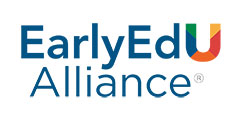California Transitional Kindergarten – Preschool Public Schools vs. Mixed Delivery
California Transitional Kindergarten Case Study
Preschool Public Schools vs. Mixed Delivery
Nearly all states and localities have expanded public programs for 4-year-olds using a mixed delivery model. Mixed delivery allows children to attend private and nonprofit preschools with the state covering tuition costs and childcare for low-income families. California currently spends more than $1 billion annually in vouchers and other supports to nonprofit, community-based preschool programs. With the expansion to universal TK exclusively through public schools, many California families with 4-year-olds are faced with whether to remain in their current childcare programs or pre-k settings organized for working parents—including Head Start—or transition to TK in public schools. Stipek says this choice sometimes boils down to a free but inconvenient option or a convenient alternative in which the family pays, often, for a childcare scenario. By working through public schools, the TK expansion is triggering a clash of cultures in the early learning field that is sometimes expressed as a resistance to academizing the early childhood learning experience. Some early education advocates view preschools and pre-k environments as places of play and social and emotional development, not focused on subject matter learning. Some people in the ECE field are worried that placement in elementary schools will undermine the focus on play and social and emotional development and lead to developmentally inappropriate practice.
Some early education advocates have questioned whether California should emphasize public school-based TK over other local options for 4-year-olds. Carla Bryant, who was associate superintendent for early learning for the San Francisco Unified School District and one of the authors of the Berkeley Children’s Forum report explain, “We’ve had 10 years of learning” about TK, and the experience has revealed the benefits of a “proactive, community-based approach” to state-supported preschool. “Not all public schools are the best for each kid,” Bryant explains. “If we have to give true access, we have to give true choices as well.”14Carla Bryant, interviewed by Alice Porter, May 16, 2022. Bryant contends that communities of color are not prepared to surrender the control and autonomy of community-based programs to public schools.
Also aligning against the rapid expansion of TK through public schools is Head Start California, which represents 147 grantees serving more than 100,000 children, including Early Head Start, from among the lowest-income families in the state. Executive Director Christopher Maricle believes that “TK can be part of a mixed delivery system,” but the 2021 budget law expands the program in public schools too quickly, leaving thousands of families uninformed about the consequences of moving children from Head Start into public school settings.15Christopher Maricle, interviewed by Alice Porter, May 17, 2022.
Maricle points out that families with 4-year-olds who leave Head Start for TK in public schools risk losing the wraparound services that at-risk children need, including healthcare, that come with participation in the program. Maricle explains that Head Start is a poverty intervention program that supports children and their caregivers, whereas TK is not. It is important to note, however, that the school package does include $3 billion to build capacity to offer mental health and social services in full-service community schools.
Maricle and his colleagues communicated potential concerns with universal TK, from the Head Start perspective, to Newsom’s office before approval of the program, including the issue of destabilizing the finances of grantees by drawing away 4-year-olds and replacing these spaces with younger children, who cost more to serve. There is also concern that TK expansion will drain an already lean workforce from other early childhood programs. Maricle contends that the K–12 environment is not developmentally appropriate for a large share of 4-year-olds. Finally, Maricle is concerned that, “many parents do not want their younger children in structured, center-based programs.” The bottom line: The state should “encourage and incentivize” the mixed delivery network, but instead, TK will “decimate” it.
Alternatively, Scott Moore, whose agency Kidango is a large Head Start grantee, believes that the TK expansion, along with other state programs targeting early learning, will boost the entire range of services for children ages 0–5, and offer families stability in affordable care. Scott points to a significantly expanded level of state support for the California State Preschool Program (CSPP) and general childcare providing an infusion of resources to programs for infants and toddlers. The new funds will enable providers to offer more services to the youngest children and their families and to increase wages for early learning educators. Moore is prepared for a possible exodus of educators from community agencies to public schools: “We will cheer them on,” he says, “We have been teaching 4-year-olds for decades. We will show them [public schools] how to do it.”
